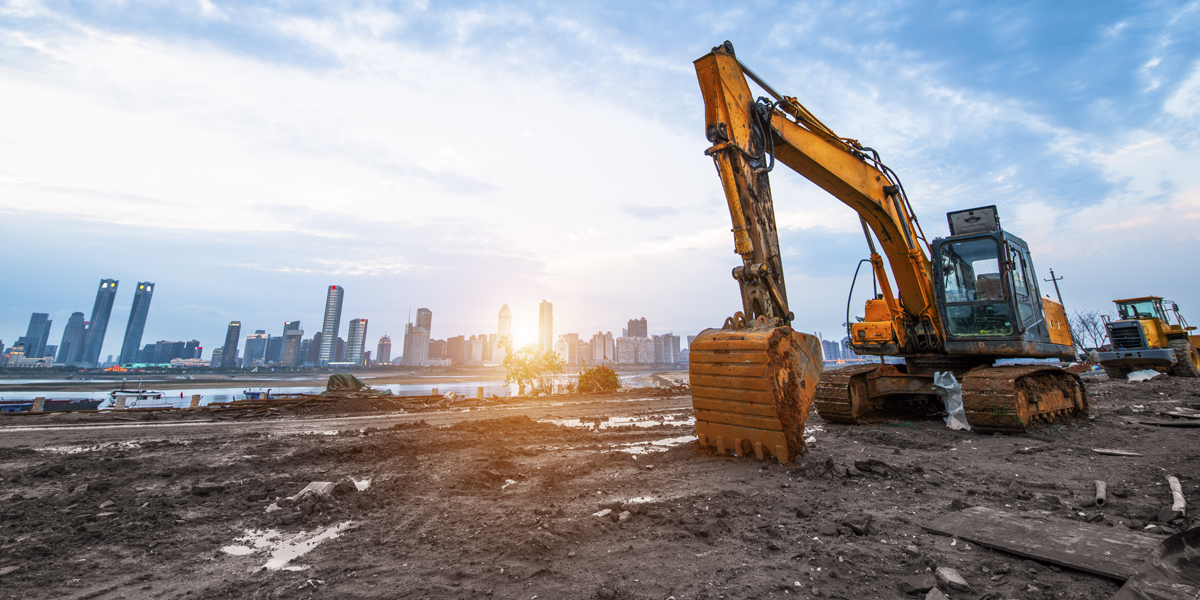The construction equipment market in India is witnessing exponential growth for the last few years. Population proliferation, rapid urbanization, and increasing government spending on infrastructure projects have increased impetus for various infrastructure developments. According to Netscribes, the construction equipment market in India will be valued at INR 327.4 billion (USD 4.5 billion) by 2020.
Substantial infrastructure investments in highways, railways, airports, ports, and power will drive higher demand for construction equipment. Government spending on the development of roads, metro rails, flyovers, and commercial complexes will further boost the market demand for construction equipment over the next few years.
Growth drivers
Growing real estate sector
The Indian real estate market is expected to be valued at INR 12,094.2 billion (USD 169.3 billion) by 2020. With a steady demographic shift propelling its explosive growth, this too will result in a construction equipment demand spike. Predilection towards mechanization over manual labor is apparent due to its cost-reduction and time-optimization. Even in scenarios such as repairing sinking buildings, there will be increased demand for backhoe loaders, compaction equipment, crawler excavators, mobile cranes, and wheeled loaders.
Accelerated public-private partnership projects in India
India ranks second to China in public-private partnership (PPP) projects. The Ministry of Road Transport and Highways has planned to construct six-lane roads under the Golden Quadrilateral program, which will require an investment of INR 335.9 billion (USD 4.7 billion). The Golden Quadrilateral project, which aims to construct 5,847 km of roadways in the country in order to connect the 4 metropolitan cities to each other, will boost the demand for construction equipment.
Apart from this, the Indian government also plans to build 100 smart cities, for which they have allocated INR 531.969 billion (USD 7.4 billion). This will result in an increased requirement of road construction equipment and earth-moving construction equipment, which in turn will lead to growth in the construction equipment market.
Increased mining activities
Staggering growth in the production of coal, iron ore, and other resources has led to the mechanization of mining activities. This will lead to an increase in the demand for mining equipment such as jaw crusher, ball mill, trapezium mill, vertical roller mill, sand washing machine, crushing plants, mobile jaw crushing plants among others.
Relaxed FDI norms to boost construction deals
The government has rolled out several policies to allow infrastructural development in India. They have relaxed FDI regulations in the construction sector by removing two major conditions related to the minimum built-up area and capital requirement. Moreover, the policy will allow projects under construction to have access to FDI. The removal of the lock-in period of three years will allow more overseas players to invest. Such increase in foreign investments will create significant employment opportunities and demand for construction equipment.

Challenges
Project bottlenecks
Regulatory issues, environmental concerns, and delays in project approval hamper construction projects, and limits the sales of construction equipment in India. Mining activities in Karnataka, Goa, Meghalaya, and Orissa are closed by the order of the Supreme Court of India in 2010. Lack of environmental clearance has caused projects of INR 2696.98 billion (USD 37 billion), to be left in the lurch.
Furthermore, 200 major infrastructure projects have been delayed due to the land acquisition bill. Project bottlenecks lead to an increase in the budget due to unforeseen expenses, a slowdown of work processes as per project timelines among others. This leads in turn delays the execution of projects and restricting construction equipment demand.
Recent trends
Adoption of robotics in the construction industry
With the pace of infrastructure development in India, greater reliance on robotics technology can help tackle the complexities of megaprojects. According to Velprakash K, National Director at JLL India, bulldozer automation systems and cutting, stacking and packaging materials and welding structural frames using robotics are increasingly becoming a common feature across large, complex construction projects.
Mundane repetitive tasks such as lifting, shifting, unloading materials can be done with automation while achieving greater efficiency. Also, in work environments such as mining or tunneling or places where extreme environments and weather conditions are highly unfavorable, adopting these technologies makes tasks easier.
Use of telematics
CASE, a construction company in 2018, launched an advanced version of its eagle eye telematics solution that was developed with Bosch at the Bauma Conexpo India. It will allow live tracking for the operating machine and assist in geofencing, which will assign a predefined space beyond which machines will stop working. Doing so will alert the user about any attempted theft, device tampering, and unauthorized usage.
Autonomous construction vehicles
Several companies are innovating autonomous vehicles like robotic tractors, mining equipment, and specialized non-road vehicles. These are likely to debut in India, even before autonomous cars. For instance, Ati Motors is building an autonomous cargo vehicle that will run inside large factory complexes and can replace manual trolleys carrying heavy parts. Another Bengaluru based company, Flux Auto, is building an autonomous truck capable of working on highways.
For an in-depth market competitive analysis and technology research on the construction equipment market in India, contact info@netscribes.com.






